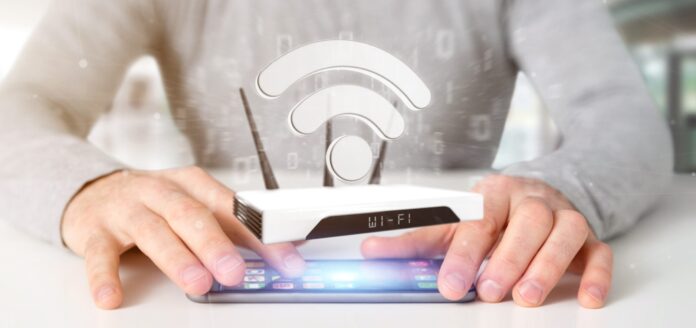Not really, and in fact, when it comes to the question of if Wi-Fi 7 will deliver new applications at all, it depends who you ask
The latest update of the Wi-Fi standard, Wi-Fi 7, is designed to use huge swaths of unlicensed spectrum to deliver a maximum data rate of up to 46 Gbps. And despite coming relatively hot on the heels of Wi-Fi 6E — itself notable in expanding available spectrum into the 6 GHz band in some geographies — market projections and expert commentary show a huge wave of coming growth with several estimates showing a five-year CAGR in excess of 45% making Wi-Fi 7 a more than $5 billion business in the next five years.
From Quectel’s perspective, Wi-Fi 7 is well-positioned to support applications such as 8K audiovisual streaming, augmented and virtual reality, cloud gaming and industrial IoT devices, according to a company spokesperson. “For enterprises, Wi-Fi 7 will be deployed in the office, school and factory in the form of routers. Given the relatively high pricing now for routers deployment will be slower in the home but a few router makers have released some Wi-Fi 7 routers for the consumer and home market,” said the spokesperson, adding that rapid adoption will occur when Wi-Fi7 integrates into mobile devices.
“Enterprises with high-demand applications like large-scale video conferencing, cloud computing, and massive IoT deployments will benefit from Wi-Fi 7’s higher speeds and bandwidth,” the spokesperson continued. “Industrial environments might utilize Wi-Fi 7 for applications like automated warehouses, real-time monitoring and smart manufacturing, where low latency and high data throughput are crucial. In the home with the increasing prevalence of high-speed internet connections, Wi-Fi 7 can fully utilize these speeds, enhancing the overall user experience. For households with heavy gaming and 4K/8K video streaming, Wi-Fi 7’s low latency and high throughput will provide a smoother experience and as homes become more connected with an increasing number of IoT devices, Wi-Fi 7’s capability to handle more devices efficiently will be advantageous.”
On the other hand, while Rohde & Schwarz is also seeing high interest for industrial Wi-Fi and low-latency communications and high-speed connectivity for things like video streaming, the company’s Market Segment and Technology Manager Jeorg Koepp doesn’t anticipate a “jump” to totally new applications. “We are not looking for the killer use case,” he said, explaining that we’ll see new Wi-Fi 7 devices of all kinds, of course, but at the end of the day, it will be “business as usual.”
“Each [Wi-Fi] generation, you have more demand for bandwidth and lower latency, but I don’t personally see completely new use cases. There will be more broadband connectivity, and of course, deployments in stadiums, airports and other public spaces — but where Wi-Fi 6 already is,” he continued. He did, however, acknowledge that things like connected glasses and other wearables might become more ubiquitous during the WI-Fi 7 era.
Andy Davidson, the senior director of technology planning at Qualcomm, doesn’t necessarily agree with this perspective, commenting that yes, some of the big use cases for Wi-Fi 7 — such as moving from 4K to 8K video or enabling more voice calls on a single network — will be “enhancements” as opposed to brand new use cases. But, he added that Qualcomm certainly sees new applications being enabled by Wi-Fi 7.
For example, he considers the ability to support multiple virtual reality (VR) devices operating within a home as an entirely new use case because even though Wi-Fi 6 made it possible for a single user to have a VR experience, Wi-Fi 7 introduces the opportunity for VR to be a multi-user experience. “I think we’ll see people playing VR together in a group,” he said. “That starts to become a challenge for a network — how does the network support these multiple VR streams? That’s where Wi-Fi 7 starts to enable that type of experience — moving from a single person experience you could do in Wi-Fi 6 to being a multi person experience you can do in Wi-Fi 7.”
Similarly, when it comes to using VR and XR (mixed reality) at scale in an enterprise, Wi-Fi 7 is absolutely necessary, argued Davidson. It’s one thing to support VR in limited capacity in an enterprise, he explained, but an entirely different thing to enable this application at scale across an organization. “The question is how do you make sure you can deliver the experience required — high throughout, low latency — in those devices to the type of scale [the enterprises] need,” he said, claiming that Wi-Fi 7, unlike any generation of Wi-Fi before it, will make this possible.
Whether or not you consider the above outlined applications “new” or not, it’s clear that the next-generation of Wi-Fi will usher in a new era of connectivity both for consumers at home and for enterprises looking to get more reliability and deterministic throughput out of their networks.

